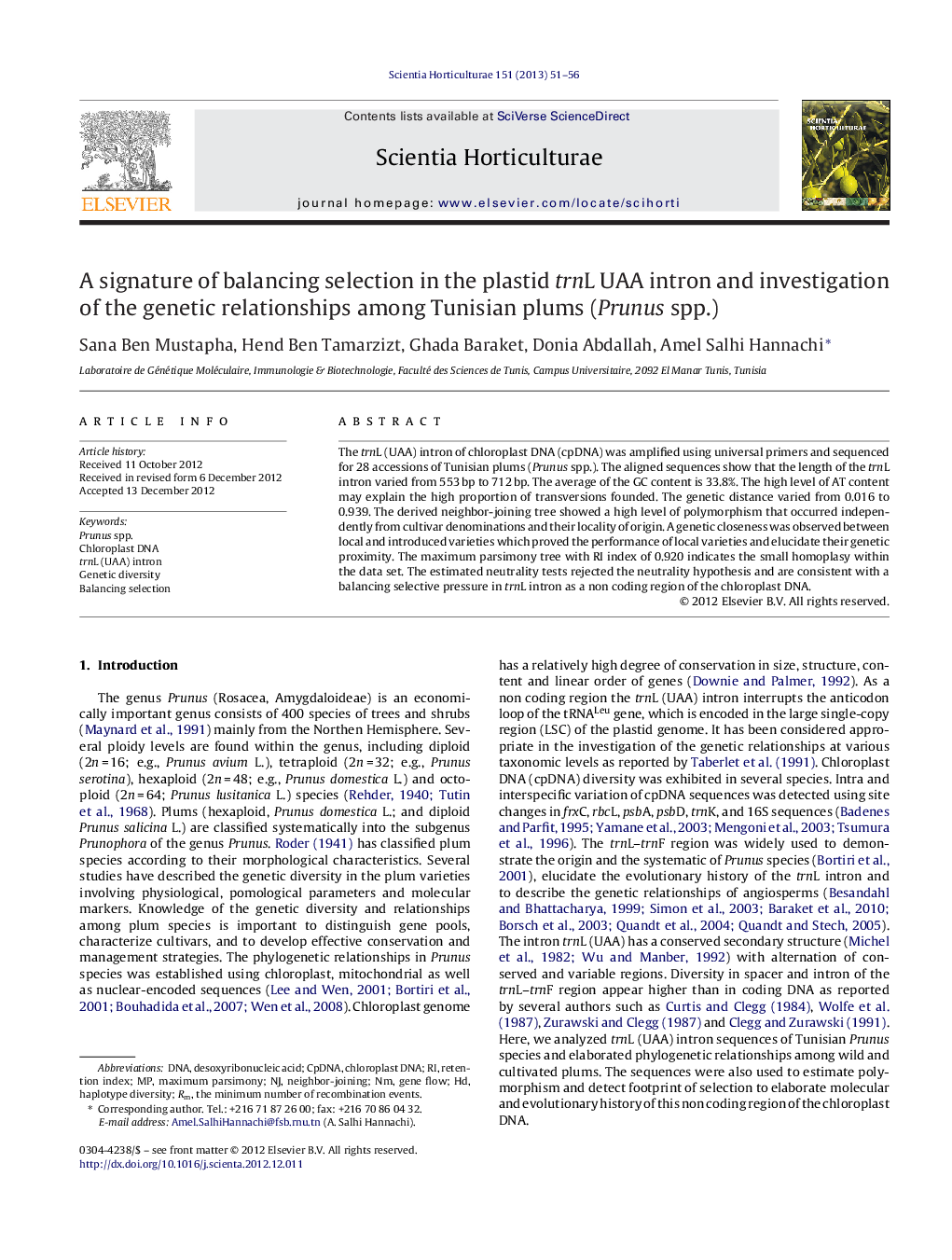| Article ID | Journal | Published Year | Pages | File Type |
|---|---|---|---|---|
| 4567406 | Scientia Horticulturae | 2013 | 6 Pages |
The trnL (UAA) intron of chloroplast DNA (cpDNA) was amplified using universal primers and sequenced for 28 accessions of Tunisian plums (Prunus spp.). The aligned sequences show that the length of the trnL intron varied from 553 bp to 712 bp. The average of the GC content is 33.8%. The high level of AT content may explain the high proportion of transversions founded. The genetic distance varied from 0.016 to 0.939. The derived neighbor-joining tree showed a high level of polymorphism that occurred independently from cultivar denominations and their locality of origin. A genetic closeness was observed between local and introduced varieties which proved the performance of local varieties and elucidate their genetic proximity. The maximum parsimony tree with RI index of 0.920 indicates the small homoplasy within the data set. The estimated neutrality tests rejected the neutrality hypothesis and are consistent with a balancing selective pressure in trnL intron as a non coding region of the chloroplast DNA.
► The trnL (UAA) intron of chloroplast DNA (cpDNA) was sequenced and analyzed for 28 Tunisian plums. ► Results suggest the occurrence of haplotypic and nucleotide diversity with a large variation level of chloroplast DNA. ► The high level of AT content may explain the high proportion of transversions founded. ► The estimated neutrality tests rejected the neutrality hypothesis and are consistent with a balancing selective pressure.
